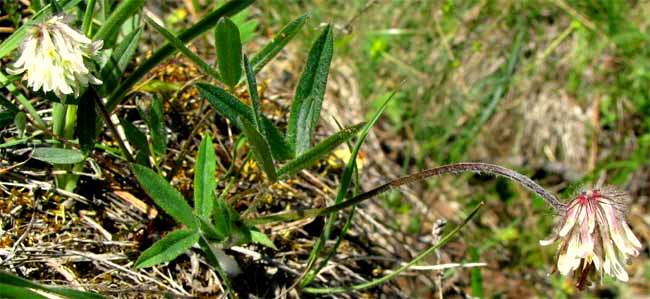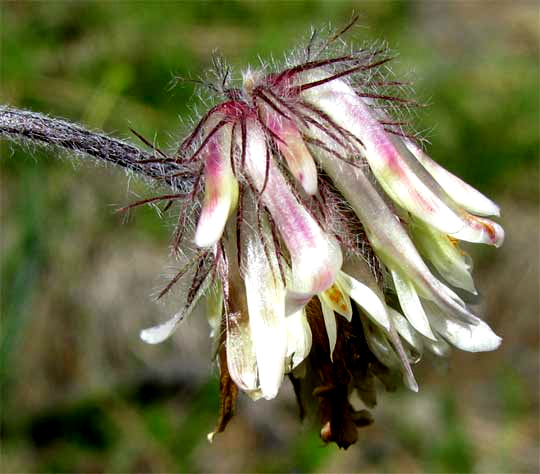Excerpts from Jim Conrad's
Naturalist Newsletter

from the the May 24, 2009 Newsletter, issued from the Siskiyou Mountains west of Grants Pass, Oregon:
WOOLLYHEAD CLOVER
At the edge of a certain serpentine bald I saw a species of clover new to me and not occurring outside the bald area. Since environmental conditions on these serpentine balds are so extreme that often rare and endemic plants turn up there, I knew I needed to photograph and identify it. The plant is shown above.
A striking feature of this clover is how all its flowers nod downward instead of pointing in all directions, making spherical heads like our best-known clover species. Also, leaflets of its trifoliate leaves are narrow, not oval like those of many clover species. Up close the flowers show another striking, distinguishing feature, which you can see below:

The flower-head stem, or peduncle, and the calyx of each long, slender corolla bear hairs so long and soft that they can only be described as woolly. In fact, a name for this clover is Woollyhead Clover. It's TRIFOLIUM ERIOCEPHALUM.
So, did the species turn out to be rare and/or endemic? The species is widely distributed through several northwestern states so as a species its distribution is too large to be thought of as endemic. However, six subspecies are recognized, and some of those are endemic. Trifolium eriocephalum ssp. cascadense, for example, the "Cascade Clover," is found only in a handful of Oregon counties, including ours. None of the subspecies is regarded as endangered. I can't find literature enabling me to differentiate the various subspecies.